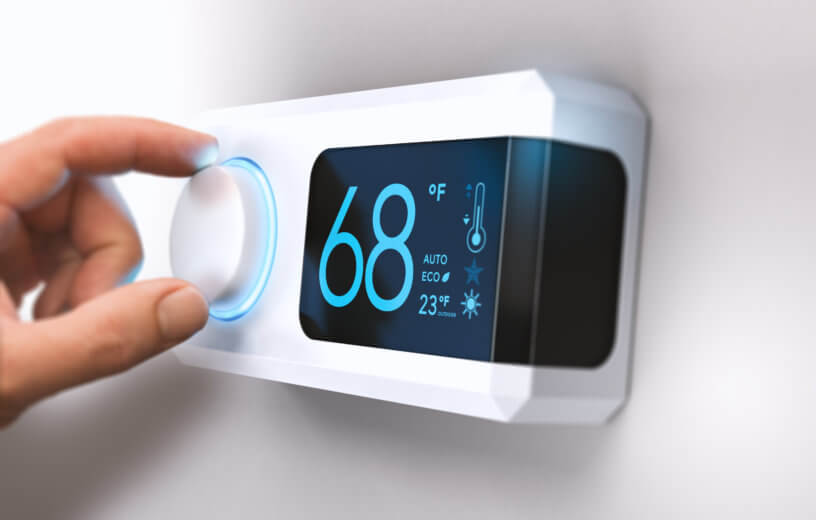ITHACA, N.Y. — Smart thermostat users probably love the savings they see in their monthly energy bills, but a new study finds many people may be falling into a “trap” that’s actually straining their local power grid.
Researchers from Cornell University say letting the thermostat make all of the decisions when it comes to managing electricity creates peak demand across the network at the wrong time of the day. It’s an especially costly problem moving from summer to winter — when people are looking to heat their homes more often.
Specifically, study authors explain that when most smart thermostat users use the default settings and don’t personalize the heating and cooling settings to their tastes, it means everyone is asking for power at the exact same time.
“Many homes have their smart thermostats turn down temperatures at night in the winter,” says Max Zhang, a professor in Cornell’s Sibley School of Mechanical and Aerospace Engineering and the Kathy Dwyer Marble and Curt Marble Faculty Director at the Cornell Atkinson Center for Sustainability, in a university release.
“The temperature can be programmed to ramp up before you wake up – and you’ll have a warm house. That’s the smart thing to do. But if everyone keeps their default setting, let’s say 6 a.m., the electric grid suffers synchronized demand spikes and that’s not smart for the system. That’s the challenge.”
“As we electrify the heating sector to decarbonize the grid,” Zhang adds, “this so-called load synchronization will become a problem in the near future.”
4 in 10 U.S. homes now use a smart thermostat
Researchers say utility companies continue to encourage people to install the devices in their homes as a means of controlling demand and lowering electricity bills. Zhang and co-author Zachary Lee examined data from over 2,000 homes in New York states, which typically has cold winters and a mix of urban, suburban, and rural communities.
The team notes that homeowners using a smart thermostat have the option to share their device’s data anonymously with electricity companies so they can analyze usage trends.
In the new study, Lee and Zhang looked at “setpoint behavior” and discovered that most homeowners simply leave the factory-default settings, instead of changing them. Moreover, the study found many customers are actually confused about how to operate their smart device and never learn how to properly program it.
Smart thermostat users are saving a fraction of what they could be!
While homeowners might be happy with an average energy savings of five to eight percent, Lee says a smart thermostat is capable of saving users between 25 and 30 percent!
However, with hundreds of homes leaving their device set to turn on at 6 a.m., researchers say local energy grids see a peak demand starting at 6:05 a.m. — an hour before daylight in a New York winter. Although the setpoint schedule is supposed to save energy, the study finds peak demand is taking place at times when renewable energy is unavailable. This can strain energy demands by roughly 50 percent.
“The smart thermostat data shows both an increase in frequency of high daily peak heating demand as well as an increase in the magnitude of the overall peak demand,” Lee says.
The researchers note that relying on fossil-fuel generators to satisfy this poorly timed demand offsets all the benefits of switching to electrification.
“The problem is not straightforward, due to the security and privacy issues involved with homeowners,” Zhang concludes. “In the end, however, we have to make smart thermostats even smarter.”
The study is published in the journal Applied Energy.

